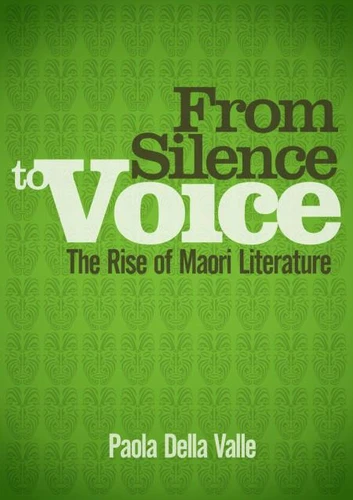From Silence to Voice
Par :Formats :
Disponible dans votre compte client Decitre ou Furet du Nord dès validation de votre commande. Le format ePub protégé est :
- Compatible avec une lecture sur My Vivlio (smartphone, tablette, ordinateur)
- Compatible avec une lecture sur liseuses Vivlio
- Pour les liseuses autres que Vivlio, vous devez utiliser le logiciel Adobe Digital Edition. Non compatible avec la lecture sur les liseuses Kindle, Remarkable et Sony
- Non compatible avec un achat hors France métropolitaine
 , qui est-ce ?
, qui est-ce ?Notre partenaire de plateforme de lecture numérique où vous retrouverez l'ensemble de vos ebooks gratuitement
Pour en savoir plus sur nos ebooks, consultez notre aide en ligne ici
- Nombre de pages288
- FormatePub
- ISBN978-1-877514-18-0
- EAN9781877514180
- Date de parution03/04/2012
- Protection num.Adobe DRM
- Taille16 Mo
- Infos supplémentairesepub
- ÉditeurOratia Books
Résumé
Before the 1970s, Maori existed in New Zealand literature as figures created by Pakeha writers. The Maori renaissance of the 1970s changed all that. Fiction writers led by Ihimaera and Grace challenged earlier stereotypes and inherited literary forms, creating a new body of writing that has redefined the Maori in literature.
Until now no single comprehensive critical work has followed this evolution.
Paola Della Valle's landmark book sets that to right. From Silence to Voice portrays the early 'silence' of Maori in New Zealand literature - characterised in caricature by colonial writers, then in increasingly sympathetic portraits from the likes of Frank Sargeson, Janet Frame and Noel Hilliard - through to the new and challenging works presented by Maori writers themselves. In an academically brilliant yet easily read analysis, Della Valle also stresses important links with the literature and culture of Italy.
Paola Della Valle's landmark book sets that to right. From Silence to Voice portrays the early 'silence' of Maori in New Zealand literature - characterised in caricature by colonial writers, then in increasingly sympathetic portraits from the likes of Frank Sargeson, Janet Frame and Noel Hilliard - through to the new and challenging works presented by Maori writers themselves. In an academically brilliant yet easily read analysis, Della Valle also stresses important links with the literature and culture of Italy.
Before the 1970s, Maori existed in New Zealand literature as figures created by Pakeha writers. The Maori renaissance of the 1970s changed all that. Fiction writers led by Ihimaera and Grace challenged earlier stereotypes and inherited literary forms, creating a new body of writing that has redefined the Maori in literature.
Until now no single comprehensive critical work has followed this evolution.
Paola Della Valle's landmark book sets that to right. From Silence to Voice portrays the early 'silence' of Maori in New Zealand literature - characterised in caricature by colonial writers, then in increasingly sympathetic portraits from the likes of Frank Sargeson, Janet Frame and Noel Hilliard - through to the new and challenging works presented by Maori writers themselves. In an academically brilliant yet easily read analysis, Della Valle also stresses important links with the literature and culture of Italy.
Paola Della Valle's landmark book sets that to right. From Silence to Voice portrays the early 'silence' of Maori in New Zealand literature - characterised in caricature by colonial writers, then in increasingly sympathetic portraits from the likes of Frank Sargeson, Janet Frame and Noel Hilliard - through to the new and challenging works presented by Maori writers themselves. In an academically brilliant yet easily read analysis, Della Valle also stresses important links with the literature and culture of Italy.



